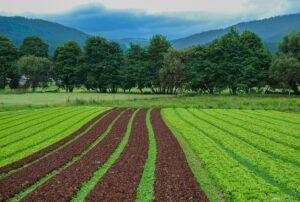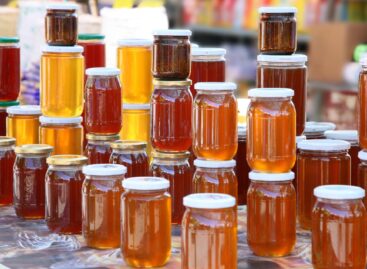Information about changes in direct area-based subsidies during the year
The Ministry of Agriculture informs agricultural producers and the relevant contributors that several regulations affecting the direct support entitlements of the Common Agricultural Policy are already changing favorably for producers during the year. The basis of most of the amendments is the EU simplification package fought for by European farmers’ protests.

(Photo: Pixabay)
The related legislative amendments have also been published, which include, among other things, the sanctions affecting small producers of less than 10 hectares, the ability to fulfill the regulations regarding crop rotation by diversifying crop production, the 50-meter safety zone of certain products used in the Agro-ecological Program (AÖP) or the more favorable conditions for areas affected by wind erosion apply to classification. The following important changes therefore already affect this year’s 2024 application and management practice.
- Reducing the administrative burden on farmers with less than 10 hectares
From the point of view of the use of the support, it has been compulsorily applied until now, the so-called from now on, all agricultural producers whose eligible area declared in the Single Application (EC) does not exceed 10 hectares will be exempted from inspections and sanctions related to conditionality requirements. The measure affects tens of thousands of small farms. In practice, this means that if a producer farms on less than 10 hectares, he does not have to worry at all that the Treasury would reduce his agricultural subsidies due to a violation of some environmental protection or animal protection rule within the framework of conditionality. They will not even be checked with him in connection with the subsidies. However, we remind farmers that the possibility of official investigations in the traditional sense, not related to subsidies, will not disappear, and law-abiding behavior is still everyone’s civic duty.
- Starting this year, the farmer can meet the 7 requirements of the HMKÁ in addition to crop rotation by diversifying crop production: – if the agricultural producer with between 10 and 30 hectares of arable land grows at least two types of arable crop in the relevant year, with the plant culture grown on the largest area occupying no more than 75% of the arable area, – an agricultural producer with an arable land of over 30 hectares grows at least three types of crops, with the crop grown on the largest area taking up no more than 75% of the arable land, and the crops grown on the two largest areas combined not exceeding 95% of the arable land. In the EC – whose submission deadline is June 10 this year – the producer does not have to make a separate statement about how he fulfills the requirement. The other rules regarding diversification (examined time window, variety of plant cultures) are the same as the relevant regulations of the AÖP, so by fulfilling the AÖP’s commitment to a higher level of diversification, the farmer naturally also fulfills HMKÁ 7.
- Producers who receive area-based support both within the framework of the Rural Development Program (RP) and this year’s direct subsidies (e.g. they use both the BISS support under the new system and the afforestation support financed from the VP), according to the previous regulations, a double sanction system were exposed to risk. Not only the mutual compliance rules valid in the previous period, but also the so-called they also had to comply with conditionality rules. Thanks to the simplification package, this duality is eliminated! Therefore, those who have to be checked within the framework of conditionality because of one of their areas are exempted from the additional obligations that would have burdened them due to mutual compliance (KM).
- Modification of the 50-meter safety zone rule for the use of certain products in the Agro-ecology Program 17/2024. (IV. 9.)
Regulation concerning the 50-meter safety zone introduced in the AM decree (AÖP decree) was eased within the framework of the Agro-ecology Program — commitment to the use of microbiological preparations, soil and plant conditioners and nitrogen-fixing preparations. The 50-meter safety zone does not therefore apply to all drugs. It is an exception if the authorization document for the given preparation includes a safety lane narrower than 50 meters, or if there is no such restriction at all. If the permit document does not contain a 50-meter protection zone, the affected products can be distributed in accordance with the provisions of the permit document and in accordance with HMKÁ 4 requirements.
- Differentiation of areas threatened by wind erosion and water erosion in the case of JFGK requirement 1
16/2024. (IV. 9.) AM decree was amended, so the definition of areas threatened by erosion was changed in relation to requirement 1 of the JFGK. According to the new regulation, in the future, areas exposed to deflation risk, i.e. wind erosion, will not be included in the area at risk of erosion, so the obligations according to JFGK 1 apply only to areas exposed to water erosion.
AM
Related news
Bird flu reappears in Csongrád-Csanád County
🎧 Hallgasd a cikket: Lejátszás Szünet Folytatás Leállítás Nyelv: Auto…
Read more >Farmers help shelters
🎧 Hallgasd a cikket: Lejátszás Szünet Folytatás Leállítás Nyelv: Auto…
Read more >AM: the Ministry of Agriculture is helping dairy farmers with another tender
🎧 Hallgasd a cikket: Lejátszás Szünet Folytatás Leállítás Nyelv: Auto…
Read more >Related news
KSH: industrial producer prices in November 2025 were on average 2.7 percent lower than a year earlier and 0.3 percent lower than the previous month’s prices
🎧 Hallgasd a cikket: Lejátszás Szünet Folytatás Leállítás Nyelv: Auto…
Read more >Employment at 4.5-year low
🎧 Hallgasd a cikket: Lejátszás Szünet Folytatás Leállítás Nyelv: Auto…
Read more >This is how we eat honey in 2026
🎧 Hallgasd a cikket: Lejátszás Szünet Folytatás Leállítás Nyelv: Auto…
Read more >







